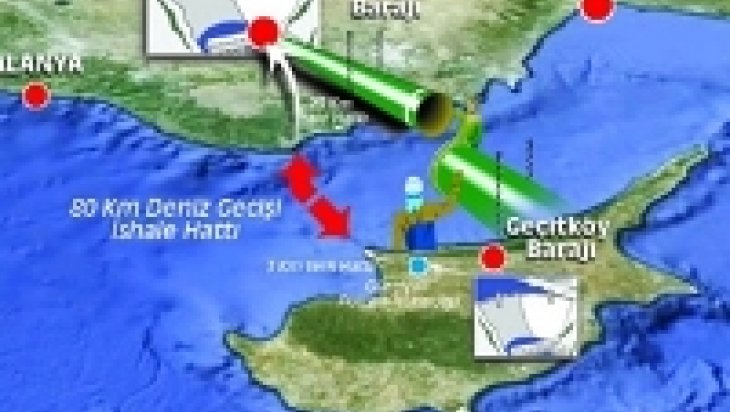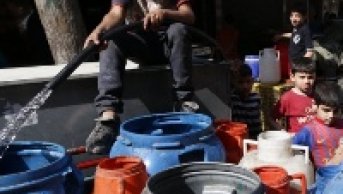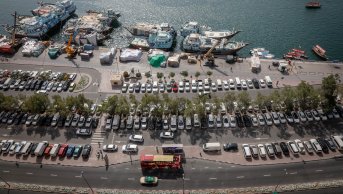TRNC Water Supply Project Getting Closer to Completion

A typical Mediterranean climate prevails in TRNC (Turkish Republic of Northern Cyprus), and the water scarcity in the country does not only manifest itself as a problem in terms of quantity, but also as a problem in terms of water quality. The potable water quality in the many parts of the country is below the world standards, and there is nowhere else where the water could be supplied. Despite the fact that TRNC has a total land area of 3,299 km2 (329,890 ha), 187,069 ha (V,70) is used for agriculture and only 9,482 ha of this is used for irrigation-based agriculture. Only 1/10 of the agricultural land can be cultivated with irrigation method, and a quality product cannot be cultivated due to degradation of water quality and limited water resources. As seen, the water scarcity does affect not only the use of potable water, but also the agricultural use of water.
Also climatic changes have impacts on the water scarcity. The rising temperatures over the past three decades have negatively affected the precipitation, which is the only source of alimentation of water resources in the region, and increased the evaporation.
The increasing degradation of clean water resources in TRNC has worsened the existing problem and thus many projects have been carried out to overcome the problem.
These projects are listed respectively as follows; TRNC government's agricultural modernization project in Guzelyurt area, Yayla Irrigation Project, Guzelyurt Diversion Canal Project, Gemikonağı Reservoir Project, Dam Construction in Yeşilırmak Valley, treating domestic waste water in Haspolat Wastewater Treatment Plant, Water Supply through Treatment of Sea Water, and water transfer from Turkey to TRNC. Agricultural modernization project in Guzelyurt, among the aforementioned projects, other than the water transfer from Turkey has been completed; while the Yayla Irrigation Project, Guzelyurt Diversion Canal Project and Gemikonğaı Reservoir Project failed, and the dam project could not be carried out. The Haspolat Wastewater Treatment plant was completed and successful. In desalination which is an alternative solution for the water scarcity and aims to treat the water in Mediterranean, of which the salinity content rate is 40.000 mg/l, is not an appropriate solution for TRNC due to its cost and the existing energy problem. Desalination of sea water, which is a negative method to supply water due to the financial aspects for TRNC, has been implemented GCAS since 1997.
As suggesting solutions for TRNC's water scarcity, three different water transfer methods have been concentrated on: Water transfer through Medusa bags, transportation by water tanker and water transfer via pipeline. The first water transfer to North Cyprus in Medusa bags with capacity of 10.000 m3 took place on July 25, 1998. However, the project could not be maintained due to the financial and technical setbacks.
The Project of Potable Water Supply to TRNC
The foundation of the TRNC Potable Water Supply Project, also known as the project of the Century since it is the first in the world, was laid on March 7, 2011.
The available water per year in the TRNC is 117,5 million cubic meters. According to the recent studies, the overall water need in TRNC is some 190-197 million cubic meters. The annual water deficit between the current water potential and water need is about 70-75 million cubic meters. 2,38 cubic meters of water is planned to be transferred via the pipeline per second by this project, which is envisaged to be completed by March 2014. The figure equals to 75 million cubic meters per year, which could meet the aforementioned deficit. The 50,3 per cent of the water, which is to be transferred to TRNC, is going to be provided for drinking and domestic purposes, and 49,7 per cent is going to be provided for irrigation. By this project, both 50-year water need of TRNC will be met by allocating water for drinking and domestic use; and also an agricultural income will be provided by irrigation an area of 4824 ha.
The project of the Century, which aims at transferring water via the pipeline to be constructed at 80 km length 250 meters below the sea surface, consists of 2 dams, a 107 km-long pipeline and 2 elevation centers. 1600 mm of HDPE is to be used below the sea surface. It is stated that the suspending pipe is to be connected to the sea bottom by using cables at intervals of approximately 400-500 m between two coasts. The “Sea Transmission” unit, the most significant pillar of the project, is to be implemented for the first time in the world.
The design of the Pipeline Surveillance System, called the Smart Pipe System, which consists of components of submarine warning system, surveilling the movements in the pipeline and detecting leakages, is to be assumed by the British Neptune Oceanographics, Aquatec Group Ltd. And Trevor Jee Associates under the leadership of ARTI Project.
The project is composed of four simultaneous sections;
The Alaköprü Dam, which has the storage capacity of 130,5 million cubic meters and with 88 meters height on Dragon Stream in Turkey, is still under construction. The dam is envisaged to be used not only for TRNC potable water supply project for irrigation in Anamur and in neighboring villages, but also to generate 111,27 million kWh electricity per year.
The 75 million cubic meters of water to be stored in the dam is to be conveyed to Anamuryum Equalization Tank through the pipeline that is going to be built on the territorial line of 500 mm width and 22 kilometers length. Water received from the equalization tank will be transferred through the 1 km-long sea pipeline.
It will be transmitted to the Guzelyali force main from Anamuryum Equalization Tank via the pipeline which is a thousand and six hundred mm wide, 80 kilometers long, and 250 meters below the sea surface.
The 2,38 cubic meters of water per second is to be transferred into the Geçitköy Dam through the 3 km-long force main. The 1,20 m3/s water, allocated for drinking and domestic use per year, is to be reached to potable water pipelines via the Geçitköy main force, and 1,18 m3/s water to be used for agricultural irrigation is to be stored in Geçitköy Dam, which is at 58 m thalweg height and has a total capacity of 26,52 million cubic meters, for agricultural irrigation season. The foundation of the Geçitköy dam was laid on April 2, 2012. The construction of pipelines, on the other hand, was launched in October 2012. The Alaköprü dam is expected to be completed in the upcoming days.
Turkey is transferring water to TRNC through the TRNC Potable Water Project, envisaged to be completed by 2014.
By this project;
-The people in TRNC, having to use water under world standards for a long time, will have an have access to water at good quality.
-Ground water is intensely used in TRNC to meet the water need. It is estimated that the pressure on ground water resources will be reduced through the amount of water to be transferred from Turkey. Even if it takes a long process, it is believed that the ground water resources might refresh itself during this period.
-The quality of water is directly affected by the quality of product as well. A good-quality and efficiently-used water will have a positive impact on the product both in terms of quantity and quality.
- The contribution of water transfer to agriculture will provide an economic development.
-Another significant point is the restructuring in water management and that the people should be informed about the efficient use of water with the water transfer. Unless people are informed and the water management is restructured, the TRNC's water scarcity cannot reach a sustainable solution.
-The project will set a significant example for the East Mediterranean and Middle East, where water scarcity is a common problem.
-Water transfer to South Cyprus might be brought into question in case of a demand for water transfer via pipeline.
-By this project, of which the economic return is not at a considerable level, Turkey might reinforce its geopolitical position in the region by selling other river waters flowing into sea to Greek islands and Mediterranean islands, where water scarcity prevails.




